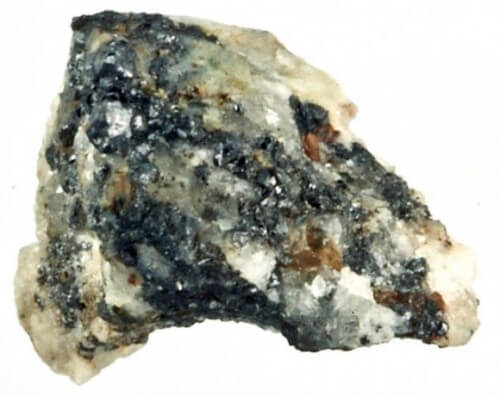Until recently, the only examples were in synthetic materials that were produced by melting precise ratios of selected elements captured under controlled conditions, including the one in which the property was discovered by Prof. Dan Shechtman
Paul Scott Anderson, Universe Today and Avi Blizovsky

A unique type of crystal appears to have come from space. This is according to a new study. Quasi-crystals are an unusual type of crystalline structure that until now was mainly created artificially in laboratory conditions and was not considered possible in nature, until the 2009 discovery of quasi-crystals by geologists in the Koryak Mountains in Russia in 2009. The origin of the mineral is unknown, but now new evidence shows that it is almost certainly that it came from space in a meteorite formed in the early days of the formation of the solar system.
About a month ago, Prof. Dan Shechtman of the Technion won the Nobel Prize in Chemistry for the discovery of quasi-crystals in 1982, and the development of the science of quasi-crystals. The mineral studied by Prof. Shechtman is created in the laboratory. Very few quasicrystals have been discovered in nature.
Ordered crystals, such as diamonds, snowflakes, and salt are symmetrical and arranged in a repeating geometric arrangement of atoms that extends in all three dimensions (both microscopic and macroscopic). They are usually found in different types of rocks. Quasi-crystals differ from them in the standard structure and composition.
When the quasi-crystals that were discovered were studied, they appeared to be composed mainly of copper and aluminum, similar to the composition of carbonaceous meteorites. The final confirmation came when isotopic measurements (oxygen atom ratio) testified to their extraterrestrial origin.
"The evidence we have indicates that quasi-crystals can form naturally, under certain physical conditions and remain stable over long periods on a cosmic scale." the researchers write.
"The soil samples were identified as part of a systematic study over a decade to locate natural quasi-crystals. Quasi-crystals are solids in which the arrangement of atoms is semi-cyclic and has rotational order and symmetry that are not possible in ordinary crystals, such as pentagonal symmetry in two dimensions and icosahedral symmetry in three dimensions.
Until recently the only examples were in synthetic materials made by melting precise ratios of selected elements captured under controlled conditions. The study contained a series of indices comparing known quasi-gebrishes to dispersion data and comparing minerals outside the database to the known synthetic quasi-crystals.
The report was published in the January 2 issue of the journal PNAS.
For the news in Universe Today

8 תגובות
Oh, this human race is starting to get on us
Do they mean that "minds" built it?
All sci-fi enthusiasts will now be shouting "Penseperma, Panseperma!"
A crystal that is built in an asymmetric structure. (diamond = crystal, also salt, many of the precious stones are crystal, although not all)
I mean a crystal that is not periodic like a normal crystal that is symmetrical but a crystal "as it were" that is not composed of symmetries I would appreciate a response from Yehuda or Michael who would confirm 🙂
In the parlance of the street, it is "such a crystal as if".
Is someone willing to explain briefly and in street terms (as much as possible...) what is a quasi-crystal?
what. After all the rational they go to the theory of aliens from space.